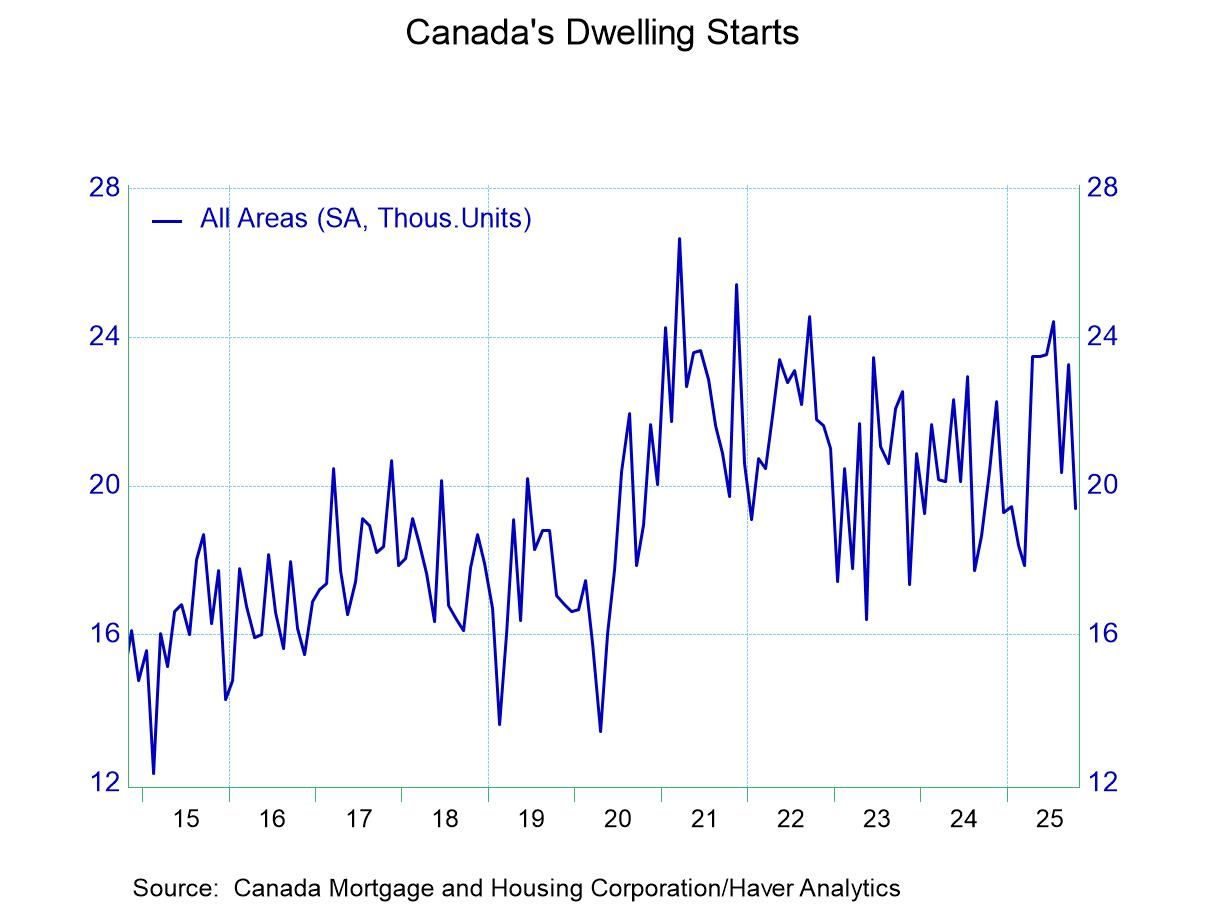U.S. Producer Prices Dip in August; Core Prices Move Higher
by:Tom Moeller
|in:Economy in Brief
Summary
- Energy prices decline again; food prices hold steady.
- Price increases of core goods remain moderate.
- Services prices strengthen.


The Producer Price Index for Final Demand eased 0.1% during August following a 0.4% July decline, revised from -0.5%. The 1.0% June increase was unrevised. During the last 12 months, the PPI increase has moderated to 8.7% from an 11.7% March peak. An unchanged August PPI had been expected in the Action Economics Forecast Survey.
The Producer Price Index less food, energy & trade services increased 0.2% (5.6% y/y) in August after a downwardly revised 0.1% July gain and a 0.3% June increase. The PPI excluding just food & energy rose 0.4% last month. A 0.3% August increase had been expected.
The decline in the August PPI was led by a 6.0% drop (+5.9% y/y) in energy prices, following a 9.0% drop in July. Gasoline prices weakened 12.7% (+25.5% y/y) after a 17.4% July drop. Home heating oil prices weakened 12.2% (+59.2% y/y) following an 11.3% July shortfall. Natural gas costs rose 0.9% (25.0% y/y) after falling 2.6% in July while electric power costs jumped 1.0% last month (12.2% y/y) following a 0.9% increase.
Food prices held steady (13.1% y/y) in August after rising 1.3% in July. Beef & veal prices eased 0.4% (-12.6% y/y) after surging 9.5% in July. Dairy product prices weakened 1.7% (+20.3% y/y) after falling 0.4% in July. Fresh & dried vegetable prices have risen 45.2% y/y while egg prices strengthened 104.7% y/y.
The PPI for goods less food & energy rose 0.2% (8.1% y/y) in August, the same as in July. These increases are the slowest since late in 2020. Finished consumer goods prices less food & energy increased 0.5% (8.4% y/y) following a 0.6% July rise. Durable consumer goods prices gained 0.3% (7.7% y/y) and core nondurable consumer goods prices rose 0.6% (8.9% y/y). Prices for private capital equipment strengthened 0.5% in August (9.3% y/y) for a second consecutive month.
Services prices increased 0.4% (6.6% y/y) in August after a 0.2% July gain. Trade services prices jumped 0.8% (12.9% y/y) after rising 0.9% in July. Services prices less trade, transportation & warehousing moved up 0.3% (2.3% y/y) after holding steady in July.
Construction product prices rose 0.3% in August (22.9% y/y) after surging 5.0% in July. Construction product prices for private capital investment rose 0.3% (25.2% y/y) and government construction costs gained 0.2% (18.6% y/y).
Intermediate goods prices declined 1.7% (+14.1% y/y) in August following a 2.2% July drop. Processed fuel costs fell 5.2% (+32.3% y//y) and added to their 8.6% July weakening.
The PPI data are published by the Bureau of Labor Statistics and can be found in Haver's USECON database. Further detail is contained in PPI and PPIR. The expectations figures are available in the AS1REPNA database.


Tom Moeller
AuthorMore in Author Profile »Prior to joining Haver Analytics in 2000, Mr. Moeller worked as the Economist at Chancellor Capital Management from 1985 to 1999. There, he developed comprehensive economic forecasts and interpreted economic data for equity and fixed income portfolio managers. Also at Chancellor, Mr. Moeller worked as an equity analyst and was responsible for researching and rating companies in the economically sensitive automobile and housing industries for investment in Chancellor’s equity portfolio. Prior to joining Chancellor, Mr. Moeller was an Economist at Citibank from 1979 to 1984. He also analyzed pricing behavior in the metals industry for the Council on Wage and Price Stability in Washington, D.C. In 1999, Mr. Moeller received the award for most accurate forecast from the Forecasters' Club of New York. From 1990 to 1992 he was President of the New York Association for Business Economists. Mr. Moeller earned an M.B.A. in Finance from Fordham University, where he graduated in 1987. He holds a Bachelor of Arts in Economics from George Washington University.






